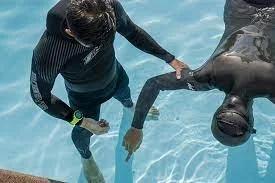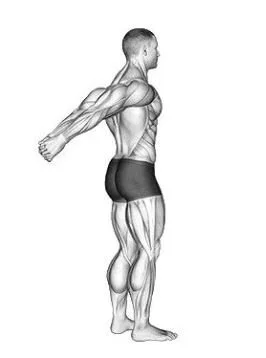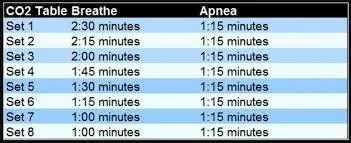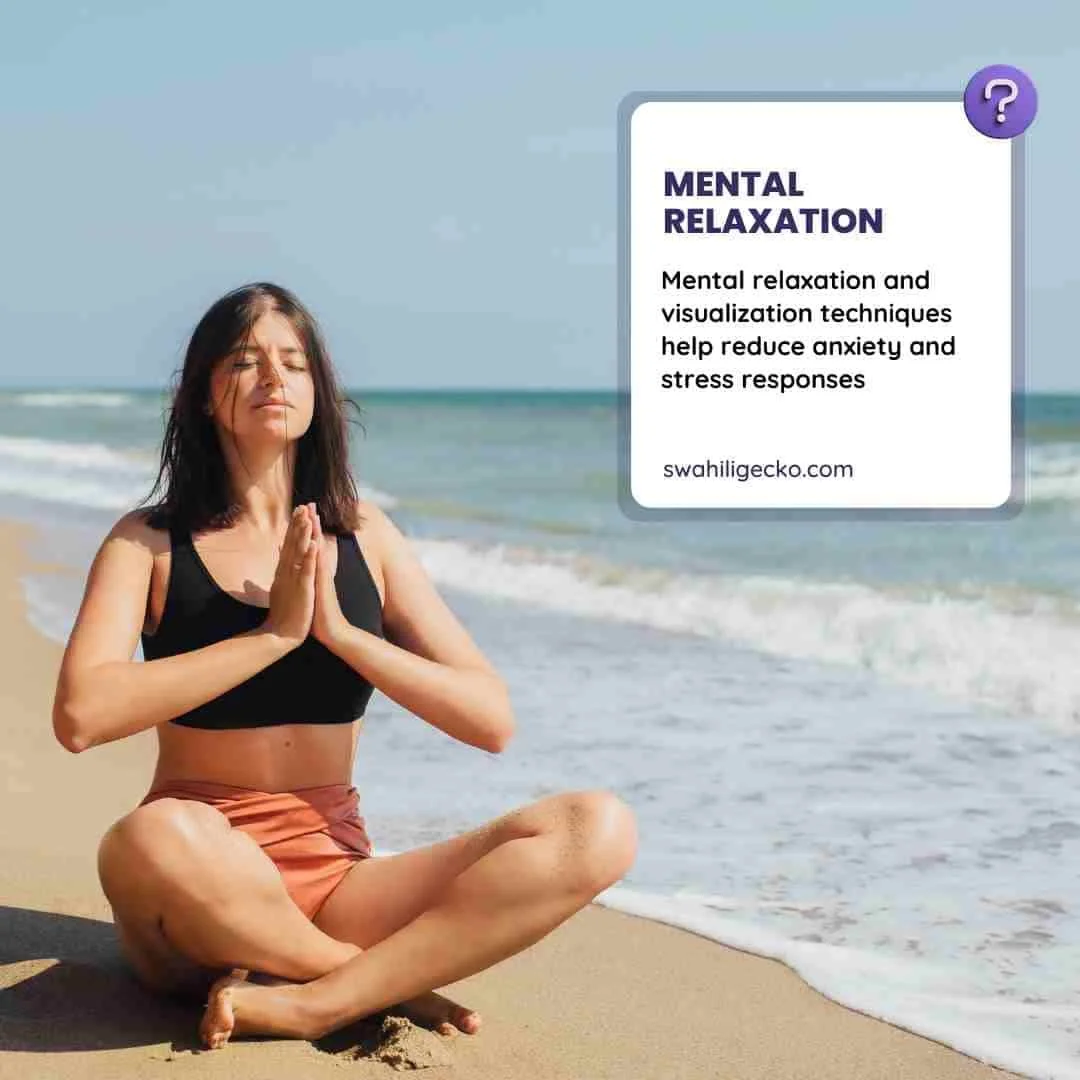Dive Training: 10 freediving Breathing Exercises for Longer Underwater Adventure
Dive training is more than just strapping on a tank and plunging into the sea; it's about mastering the art of breath control. In the diver’s world, mastering your breath is the key to unlocking incredible underwater experiences. In short, longer breathing time equals longer underwater time.
Whether you're a seasoned freediver or just starting out, understanding and practicing effective breathing techniques can make a world of difference in your dive experiences.
In this guide, I'm going to share with you 10 freediving breathing exercises that will unlock the potential for extended underwater adventures. These exercises will not only help you stay longer underwater but also enhance your overall diving experience.
So, tighten your snorkel, and let's dive right in!
10 Effective Freediving Breathing Exercises
These 10 freediving breathing exercises, including diaphragmatic breathing, static apnea training, CO2 tolerance exercises, and more, enhance breath-holding capabilities, oxygen utilization, and overall freediving skills while emphasizing safety and relaxation techniques.
They provide a comprehensive toolbox for divers to stay longer underwater and explore the depths with confidence.
1. Diaphragmatic Breathing
Diaphragmatic breathing, also known as belly breathing, engages the diaphragm, a dome-shaped muscle beneath the lungs. When you inhale deeply, the diaphragm contracts, pushing downward and expanding the abdomen, allowing you to draw in more air. Exhaling slowly allows for complete relaxation.
Your diaphragm is a powerful engine for efficient breath control. It's the secret to diving success. To master diaphragmatic breathing, follow these steps:
Lie down or sit in a comfortable position.
Place one hand on your chest and the other on your abdomen.
Inhale deeply through your nose, allowing your abdomen to rise.
Exhale slowly through your mouth.
Repeat for 10-15 minutes daily.
Benefits:
Maximizes oxygen intake and reduces oxygen consumption during a dive. Slows the heart rate, promoting relaxation. Prevents shallow breathing, which can lead to hyperventilation.
Precautions:
Ensure your breathing is slow and controlled; avoid rapid or forceful inhalations.
Practice diaphragmatic breathing on dry land before attempting it underwater.
Allowing the chest to rise instead of the abdomen.
Overexerting or straining while breathing.
2. Static Apnea Training
Static apnea is like meditation for freedivers. It helps you hold your breath for extended periods. Static apnea is a breath-holding exercise that helps the body adapt to reduced oxygen levels. It trains the body to use oxygen more efficiently and tolerate elevated levels of carbon dioxide.
Here's a simple routine to get started:
Source: abyss.com
Find a quiet, safe place to practice.
Begin with a breath-hold time you're comfortable with (e.g., 30 seconds).
Gradually increase the duration as you become more comfortable.
Always practice with a buddy for safety.
Benefits
Increases breath-hold time over time. Enhances CO2 tolerance and reduces the urge to breathe. Teaches relaxation, a vital skill for freediving.
Precautions:
Always practice static apnea with a buddy who understands safety procedures.
Start with a comfortable breath-hold time and gradually increase it.
Do not Push breath-hold limits too quickly.
Avoid hyperventilating before static apnea, which can be dangerous.
3. CO2 Tolerance Exercises
Carbon dioxide tolerance is your body's ability to handle increased CO2 levels. CO2 tolerance exercises teach your body to tolerate increased carbon dioxide levels, a natural byproduct of breath-holding.
CO2 tolerance is essential for extending breath-hold times. These exercises help you adapt to it:
.
Practice controlled breath-holding, gradually extending your time.
Focus on relaxation during breath-holds.
Never push yourself too hard; safety always comes first.
Never ignore the body's signals to breathe during exercises.
Benefits:
Reduces the discomfort associated with high CO2 levels. Allows you to hold your breath longer without feeling the urge to breathe.
Precautions:
Always prioritize safety and avoid pushing yourself to extreme limits.
Never hyperventilate before breath-holding exercises.
Avoid Overexerting or attempting breath-holds beyond your current capabilities.
4. Lung Stretching:
This exercise helps to increase your lung capacity and flexibility. There are many different lung stretching exercises, but one simple one is to lie on your back with your arms outstretched above your head. Inhale slowly and deeply, filling your lungs completely.
Then, exhale slowly and completely. As you exhale, try to contract your diaphragm and draw your abdomen in. Repeat for 10-15 times.
Here are a few simple lung stretching exercises that you can do at home:
Arm circles: Stand with your feet shoulder-width apart and your arms outstretched at your sides. Slowly rotate your arms in large circles, making sure to keep your back straight and your shoulders relaxed. Continue for 30 seconds in each direction.
Chest stretch: Stand with your feet shoulder-width apart and your hands clasped behind your back. Gently pull your shoulders back and down, expanding your chest. Hold the stretch for 10-15 seconds.
Rib stretch: Stand with your feet shoulder-width apart and your hands placed on your ribs, just below your chest. Gently push your ribs outward, expanding your chest. Hold the stretch for 10-15 seconds.
Shoulder roll: Stand with your feet shoulder-width apart and your arms at your sides. Slowly roll your shoulders forward and then backward, making sure to keep your back straight and your neck relaxed. Repeat 10-15 times in each direction.
Diaphragmatic breathing: Lie on your back with your knees bent and your hands placed on your stomach. Inhale slowly and deeply through your nose, allowing your stomach to expand. Exhale slowly through your mouth, contracting your stomach. Repeat 10-15 times.
Chest Stretch
Learn these techniques from a qualified dive instructor.
5. Breath-Hold Tables
Breath-hold tables are structured training routines that gradually increase your breath-hold time. They help improve your body's tolerance to high CO2 levels and low oxygen levels.
Breath-hold tables are your roadmap to becoming a pro freediver. They consist of specific breath-hold times and recovery periods. Follow a structured table, gradually increasing your breath-hold times.
Source: Apnealogy.com
Benefits:
A systematic approach to increasing breath-hold times. Helps you track your progress and set achievable goals.
Precautions
Follow a structured table designed by a qualified instructor.
Always practice with a buddy for safety.
Skipping the structured approach and attempting excessively long breath-holds.
Ignoring safety guidelines or attempting breath-hold tables without supervision.
6. Dynamic Apnea Training
Dynamic apnea is all about moving gracefully underwater while holding your breath. Holding your breath underwater challenges the body to efficiently use oxygen during physical exertion. It involves controlled, rhythmic breath-holding while moving gracefully underwater.
Action steps:
Practice underwater swimming with controlled, rhythmic breath-holding.
Focus on streamlining your movements for efficiency.
Benefits:
Enhances underwater efficiency and mobility. Teaches breath control during dynamic movements.
Precautions:
Practice in a controlled and safe environment.
Always dive with a buddy who understands the details of dynamic apnea.
Avoid Overexerting during dynamic apnea, leading to early breath urges.
Never neglect streamlined movements, which increase energy consumption.
7. Mental Relaxation and Visualization
Your mind is a powerful tool in freediving. Mental relaxation and visualization techniques help reduce anxiety and stress responses. When you relax mentally, your body consumes less oxygen and produces less carbon dioxide.
Before your dive, take a few moments to calm your mind. Visualize a serene underwater world and your successful dive.
Benefits:
Reduces the heart rate and oxygen consumption.
Improves focus and concentration during dives.
Enhances overall mental well-being.
Precautions:
Practice mental relaxation techniques regularly to build proficiency.
Combine them with diaphragmatic breathing for maximum benefits.
Dedicate enough time to mental preparation before a dive.
Do not fail to create calming mental imagery for visualization.
For your safety underwater, here are 10 must-follow rules for safe scuba diving or feeding.
8. Segmented Breathing
Segmented breathing isolates and strengthens different muscle groups involved in breathing. It emphasizes the sequential activation of the diaphragm, chest, and shoulder muscles during inhalation and exhalation.
Action steps
Start with diaphragmatic breathing.
Practice segmented breathing with slow and controlled movements.
Inhale slowly through your nose, expanding your chest, then inhale through your mouth, raising your shoulders.
Exhale in reverse order.
Repeat for 10-15 minutes daily.
Precautions:
Avoid Rushing through segmented breathing exercises.
Stop Overcomplicating the exercise with excessive force or speed.
9. Square Breathing (Box Breathing)
Square breathing, also known as box breathing, is a technique that regulates the breath to promote relaxation. It balances the inhale, hold, exhale, and hold phases, calming the nervous system.
Inhale slowly for a count of four, hold for four, exhale for four, and hold for four. Practice for 10-15 minutes daily. Practice square breathing regularly to build proficiency.
Benefits
Reduces stress and anxiety levels.
Regulates the heart rate and oxygen consumption.
Precautions:
Use it as a tool for relaxation before and after dives.
Maintain equal durations for each phase (inhale, hold, exhale, hold).
Do not Rush through the exercise instead focus on slow, deliberate breaths.
10. The 437 Breathing Exercise
The 437 breathing exercise is another simple but effective way to reduce stress and anxiety before freediving or scuba diving. It is also a good way to improve your overall breathing health.
To do the 437 breathing exercise, follow these steps:
Find a comfortable position to sit or lie down in.
Close your eyes and place the tip of your tongue on the roof of your mouth, right behind your front teeth.
Inhale slowly and deeply through your nose for a count of four.
Hold your breath for a count of three.
Exhale slowly and completely through your mouth for a count of seven, making a whooshing sound.
Repeat steps 3-5 for a total of four cycles.
You can do the 437 breathing exercise as often as you like, but it is especially helpful to do it when you are feeling stressed or anxious.
These 10 freediving breathing exercises are invaluable tools for anyone looking to extend their underwater adventures. However, always prioritize safety, seek professional guidance when necessary, and progress at your own pace.
And if you’re also a beginner scuba diver, here are 23 of my best scuba diving tips for beginners, from 4 decades of experience.
Finding a Freediving Course Near You
Ready to take your skills to the next level?
The next step is finding a freediving course near you where you’ll get access to qualified dive instructors to teach you everything you need for your dive adventure.
To find a freediving course near you, seek recommendations from local divers, check online resources, and choose a reputable course provider.
If you’re seeking a dive center in Tanzania or East Africa, consider Swahili Divers Agency, the only RAID instructor training center North of South Africa. We are the SAFEST dive center in East Africa with not a single incident or near missin the last 10 years.
We’re also the only dive center in the region with nitrox, DECO 40, DECO 50, and other technical diving courses.
Contact us today for first-class dive training in a third-world country!
Freediving in Africa
Looking for new sites and cities for your next underwater adventure? It’s time to try something different. It’s perhaps time to visit the World’s richest content in terms of nature.
Africa offers some of the most breathtaking freediving opportunities. There are countless A-list diving sites across Africa, such as in Zanzibar and Pemba Island Tanzania.
With crystal clear waters and some of the most unbelievable dive sites in the world. After 4 decades of scuba diving in Africa and around the world, East Africa is arguably the best region to explore unsaturated dive sites.
Dive into the unique experiences the continent has to offer, from exploring vibrant coral reefs to encountering majestic marine life.
Contact Swahili Divers Center today to help you plan your dive adventure in Africa.
FAQ: Freediving Breathing Techniques
Have more questions about scuba diving and freediving breathing techniques? Let’s answer some of the most common questions people ask. Hope we answer all your questions.
How do you train breathing for diving?
Training your breathing involves various exercises like diaphragmatic breathing, breath-hold tables, and CO2 tolerance exercises.
How do you train your body for diving?
Physical fitness is crucial. Focus on cardiovascular conditioning, flexibility, and core strength.
What training do divers do?
Divers undergo rigorous training, including theoretical knowledge, practical skills, and safety protocols.
How long does it take to train for diving?
The duration varies, but it typically takes several weeks to complete basic training and longer for advanced levels.
What are the 5 steps of diving?
The five steps of diving include planning, entry, descent, bottom time, and ascent.
What is the 5 2 5 breathing method?
The 5-2-5 breathing method involves inhaling for five seconds, holding for two seconds, and exhaling for five seconds. It's a relaxation technique.
More questions? Contact us for more expert guidance on scuba diving.
Conclusion
Breath control is the diver’s superpower. With these 10 freediving breathing exercises, you'll unlock the potential to stay longer underwater, explore hidden treasures, and create unforgettable underwater memories.
Freediving is not just about breath-holding; it's about a deep connection with the ocean and a profound understanding of your own body and mind. Happy diving!
